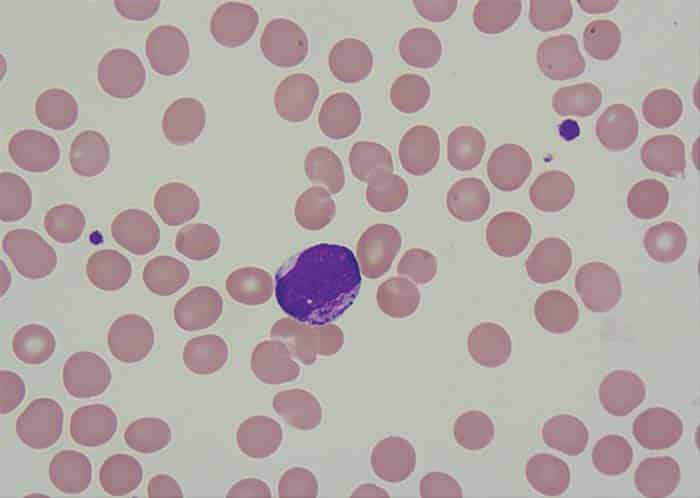April 2024—The rise in fungal infections in recent years troubles Sean Zhang, MD, PhD, for reasons near and far. It’s readily apparent in the patient populations at Johns Hopkins Hospital, where he is director of the mycology laboratory. Especially concerning is the increase in Candida auris following the height of the COVID-19 pandemic, both in terms of colonization and infection cases, says Dr. Zhang, who is also associate professor of pathology, Division of Medical Microbiology, Department of Pathology, Johns Hopkins University School of Medicine. “Since 2022, we suddenly saw an uptick in Candida auris cases across the Johns Hopkins Health System.” But the situation isn’t unique to Johns Hopkins. Pointing to CDC figures, he notes that the tide is rising more broadly as well. The agency reports that in 2020, there were 757 clinical cases and 1,310 screening cases of C. auris in the United States. In 2022, there were 2,377 clinical cases and 5,754 screening cases.
Read More »2024 issues
Hybrid practice model beckons as solution
April 2024—With the technology now available, could and should remote diagnostic pathology, or at least a hybrid model, become more the norm in the future? Timothy Craig Allen, MD, JD, and Casey P. Schukow, DO, of Corewell Health in Michigan, in an editorial published recently, say the time for one or the other or both has come.
Read More »Need for speed in solid tumor molecular testing
April 2024—As the call for fast turnaround of genetic testing results in tumor profiling grows louder, the need for rapid, reliable test methods becomes more pressing. Meanwhile, with new genetic biomarkers emerging at a rapid pace, “everything has tipped the balance toward comprehensive next-generation sequencing analysis,” said Maria E. Arcila, MD.
Read More »Microscope to image—big lift but also a blueprint
April 2024—The Food and Drug Administration in February cleared Proscia’s Concentriq AP-Dx digital pathology software for the purpose of primary diagnosis.
Read More »Billing headwinds grow stronger for labs
April 2024—In billing for pathology and laboratory services, the hurdles are only getting higher. Narrow networks, prior authorizations, claims denials. Payers “have deeper pockets and figure they can outlast us,” said Joe Saad, MD, chair of the CAP Council on Government and Professional Affairs, in a Feb. 14 roundtable led online by CAP TODAY publisher Bob McGonnagle. He and others talked about AI, digital pathology codes and molecular Z-Codes, biomarker testing, and unity within the laboratory community.
Read More »How Duke’s molecular diagnostics lab retains and trains
April 2024—Too few people, too much to do. In that, Duke Health’s molecular diagnostics laboratory is no different from any other laboratory. But competing for staff on the basis of money alone is out. “The reality is that in today’s labor market, any molecular technologist can always find a job that pays more,” says Barbara Anderson, PhD, MB(ASCP)CM, analytical specialist in Duke’s molecular diagnostics laboratory, Division of Molecular Pathology, Genetics, and Genomics.
Read More »AMP case report: Use of molecular techniques to solve a challenging case of primary cutaneous marginal zone lymphoma
April 2024—Primary cutaneous marginal zone lymphoma (PCMZL) is a newly recognized, distinctive subtype of non-Hodgkin’s lymphoma. This low-grade lymphoma predominantly presents as papules or nodules within the skin of middle-aged adults. Formerly grouped under the extranodal marginal zone lymphoma (EMZL) category, the World Health Organization’s fifth edition classification of hematolymphoid tumors now recognizes PCMZL as a distinct entity.
Read More »A how-to guide to quality management in clinical labs
CAP Publications released this month its newest book, Quality Management in Clinical Laboratories: Optimizing Patient Care Through Continuous Quality Improvement. It is a second edition; the first was published in 2005. Twenty-one contributors cover everything from laboratory staff and informatics to all phases of testing and the laboratory quality management plan.
Read More »From the President’s Desk
April 2024—When Tip O’Neill, former speaker of the U.S. House of Representatives, said many years ago that all politics is local, he was talking about how elections, legislation, and all of politics affect people where they live. I believe the concept applies just as much to pathology advocacy. When it comes to the issues we care about for our profession and for our patients, our efforts in advocacy, lobbying, educating, and persuading all need to happen at the local level just as much as at the national level.
Read More »Clinical pathology selected abstracts
April 2024—Neonatal anemia is a common comorbidity of premature infants and may result from certain obstetric conditions or diseases, or, in the case of iatrogenic anemia, from multiple phlebotomies in the first days of life. Once infants enter the neonatal intensive care unit (NICU), they undergo a series of laboratory tests at baseline and then as needed for treatment or monitoring. These tests commonly include blood cultures, CBCs, coagulation profiles, metabolic screens, blood gases, blood glucose, and chemistry profiles. Phlebotomy-associated blood loss is more clinically relevant in lower birth-weight neonates since they have lower total circulating blood volumes. When blood is drawn from an indwelling umbilical catheter, even more blood is removed due to the need to flush residual intravenous fluid from the line.
Read More »Anatomic pathology selected abstracts
April 2024—Fumarate hydratase-deficient renal cell carcinoma is a rare and distinct subtype of renal cancer caused by FH gene mutations. FH negativity and s-2-succinocysteine (2SC) positivity on IHC can be used to screen for FH-deficient renal cell carcinoma (RCC), but their sensitivity and specificity are imperfect. The expression of AKR1B10, an aldo-keto reductase that catalyzes cofactor-dependent oxidation-reduction reactions, in RCC is unclear. The authors compared AKR1B10, 2SC, and FH as diagnostic biomarkers for FH-deficient RCC. They included genetically confirmed FH-deficient RCCs (n=58), genetically confirmed TFE3 translocation RCCs (TFE3-tRCC; n=83), clear cell RCCs (n=188), chromophobe RCCs (n=128), and papillary RCCs (pRCC; n=97).
Read More »Molecular pathology selected abstracts
April 2024—Personalized medicine is revolutionizing cancer therapy, with targeted treatments customized to a person’s cancer-specific mutational profile leading to substantially improved health outcomes. Personalized medicine can also be applied to cancer prevention for high-risk groups based on genetic predisposition or lifestyle factors. However, there is a significant gap in cancer research resulting from a lack of equitable representation of racial and ethnic groups in cancer databases. Most research data are derived from white patients in the United States and Europe, creating racial disparities in understanding cancer development and therapies. The underrepresentation of patients of African, Asian, and Native American descent in observational, translational, and clinical cancer studies is particularly notable.
Read More »Newsbytes
April 2024—Transitioning to digital pathology can seem complex and costly. And for some, but not all, laboratories, cost in particular can be a barrier to adoption. So how do you determine which camp your lab falls into? You calculate, according to Orly Ardon, PhD, director of digital pathology operations at Memorial Sloan Kettering Cancer Center.
Read More »Q&A column
April 2024 Q. Ordering clinicians are requesting that our laboratory flag abnormally high absolute neutrophil counts (ANC) on peritoneal fluids. We cannot find sources for reference ranges, but there is literature that states that a polymorphonuclear cell count greater than 250/μL is a reliable discriminatory test for bacterial peritonitis. We would like to use this as our reference and flag results with an ANC greater than 250 cells/μL as abnormally high. Is this acceptable? Read answer. Q. How do you code fallopian tubes submitted for sterilization with a finding of a paratubal cyst? Read answer.
Read More »Letters
April 2024—The article “Test adds twists to lung disease diagnosis” (November 2023, page 1) virtually ignores the major problem of clinicians in the hospital thinking that it is perfectly okay to take specimens from patients in the hospital and send them directly to whatever laboratory they choose without input from the hospital’s laboratory administration or medical director. The laboratory medical director is legally responsible for approving the menu of laboratory tests to be performed in-house and all of the reference laboratories to be used.
Read More »Put It on the Board
April 2024—Member organizations of the Enduring Consensus Cervical Cancer Screening and Management Guidelines effort released in March their recommendations for the use of p16/Ki-67 dual stain for managing individuals who test positive for HPV.
Read More »Game’s afoot in bladder cancer research
March 2024—Like identifying the shift in battle that leads to victory, or the battle that wins the war—let alone declaring a war’s ultimate victor—it’s hard to gauge the whens, ifs, and hows that mark progress in medicine. For those who are deeply rooted in bringing advances to testing in urothelial cancers, current research is flourishing and flummoxing. In early and late stage, both for bladder and upper tract disease, recently approved therapies are leading to better outcomes for patients. More immunotherapies and antibody-drug conjugates are on their way, and with them come new options for testing. But as with any cancer, researchers follow numerous promising paths, knowing that some will dead-end and others will succeed primarily (albeit usefully) in raising more questions. Nevertheless, they continue to rally the work forward, with multiple breaches, and Agincourt, ever in sight. For experts such as David McConkey, PhD, progress will best be measured by how regularly precision makes its way into the clinical setting.
Read More »From training to first jobs, can the transition be made easier?
March 2024—Pathology trainees and training programs vary, as do first jobs, but the first year in pathology practice is generally said to be a tough one, largely because of the transition to fully independent case sign-out.
Read More »In diabetes patients, biomarker use for early-stage HF
March 2024—For patients with type 2 diabetes, the cardiac biomarkers are a better predictor of early-stage heart failure than conventional risk prediction scores. “We need to use biomarkers,” says Petr Jarolim, MD, PhD.
Read More »Survey probes staff shortage in genomics labs
March 2024—From a technologist workforce perspective, clinical genomics laboratories are in trouble. “It’s truly a crisis,” said Marco Leung, PhD, clinical director of the Steve and Cindy Rasmussen Institute for Genomic Medicine at Nationwide Children’s Hospital in Columbus, Ohio.
Read More »AP and CP reporting, from interfaces to IT wishes
March 2024—Anatomic and clinical pathology reporting—what’s working, what’s missing. Three pathologists (all board certified in informatics) and representatives of three information system companies met online Dec. 19 with CAP TODAY publisher Bob McGonnagle to talk about reporting needs and what’s optimal. The first half of their discussion was published in the February issue, with CAP TODAY’s guide to anatomic pathology computer systems. The second half begins here.
Read More »What’s going on? Interpreting urine toxicology cases
March 2024—For urine toxicology screening, immunoassays are automated and rapid but have variable sensitivity and specificity and results are considered presumptive. Mass spectrometry, used for confirmation, has superior sensitivity and specificity but is labor-intensive and slow and requires significant expertise.
Read More »AMP case report: Acute myeloid leukemia with hyperdiploidy
March 2024—CAP TODAY and the Association for Molecular Pathology have teamed up to bring molecular case reports to CAP TODAY readers. AMP members write the reports using clinical cases from their own practices that show molecular testing’s important role in diagnosis, prognosis, and treatment. This month's report comes from Aga Khan University in Karachi, Pakistan. Case. An 87-year-old male with a clinical history of hypertension and sick sinus syndrome presented with a one-month history of fever, generalized weakness, and weight loss. There was no lymphadenopathy or hepatosplenomegaly on physical examination. Bone marrow examination was performed to evaluate for cytopenias.
Read More »In urinalysis, compromises, collections, and rules
March 2024—Reflex criteria, middleware, bladder cancer screening, point of care, controls, and collections came up in CAP TODAY’s Jan. 16 roundtable on urinalysis. Six people weighed in, with CAP TODAY publisher Bob McGonnagle leading. Their take on where things stand and where they can be better follows. CAP TODAY’s guide to urinalysis instrumentation begins here. Tim Skelton, in last year’s ...
Read More »From the President’s Desk
March 2024—During the 12 years I spent as director of a pathology residency program, one thing I worried about was how to better prepare our residents for their first roles as attending pathologists or laboratory directors. For many pathologists, the transition from always having someone looking over their shoulder to being on their own is very challenging.
Read More »Clinical pathology selected abstracts
March 2024—Despite research into colorectal cancer screening and clinical experience, screening uptake remains low. Colorectal cancer (CRC) screening involves noninvasive tests, such as a fecal immunochemical test (FIT) and stool-based DNA tests, as well as invasive tests, such as colonoscopy. The latter has the best performance characteristics for early cancer and adenoma detection. The average adherence to CRC screening is 60.6 percent for U.S. patients aged 50 to 75 years, which is well below the 80 percent goal for adherence set by the National Colorectal Cancer Roundtable and American Cancer Society. Offering stool-based tests to patients who refuse colonoscopy results in only a modest increase in adherence, to 67 percent.
Read More »Anatomic pathology selected abstracts
March 2024—Lung transplantation is the definitive therapy for end-stage pulmonary sarcoidosis. While several case reports have described recurrent sarcoidosis in allografts, the incidence and clinicopathologic characteristics remain unclear. The authors conducted a study in which they characterized the clinical and histopathologic features of recurrent sarcoidosis diagnosed in post-transplant lung surveillance transbronchial biopsies (TBBx). They identified 35 patients who underwent lung transplant for pulmonary sarcoidosis during the study period. Eighteen (51 percent) of the patients experienced recurrent sarcoidosis post-transplant—seven females and 11 males (mean age at recurrence, 51.6 years).
Read More »Molecular pathology selected abstracts
March 2024—Human epidermal growth factor receptor 2 is a critical biomarker in breast cancer, gastrointestinal malignancies, and other cancers. HER2 protein expression can be evaluated using IHC, and the DNA copy number of its encoding gene, ERBB2, can be evaluated using FISH. In most clinical settings, IHC evaluation is categorized as positive (3+), equivocal (2+), or negative (0 to 1+), with equivocal cases being reflexed to FISH. Patients with HER2-positive tumors, defined as either 3+ or 2+/FISH positive, have been eligible to receive HER2-targeted therapy for many years. More recently, the FDA approved the antibody-drug conjugate trastuzumab deruxtecan (T-DXd) to treat patients with HER2-low breast cancer, defined as tumors with IHC 1+ or 2+/FISH negative. This promising treatment has allowed many more patients to receive molecular-targeted therapy.
Read More »Q&A column
March 2024 Q. Is it a requirement that routine bacteriology cultures (for example, urine, sputum) be plated in a biological safety cabinet in your typical hospital biosafety level 2 laboratory? Is it safe to read these cultures on an open bench? Read answer. Q. What source should a laboratory use for reference intervals for analytes? Read answer.
Read More »Newsbytes
March 2024—While Dr. Seuss’ assertion that “the more that you read, the more things you will know” is generally accurate, it doesn’t address the fact that how information is presented affects comprehension, a truism that is not lost on Edward Klatt, MD, who knows whereof he speaks when it comes to sharing information on patient portals.
Read More »Put It on the Board
March 2024—The Food and Drug Administration approved in December the AvertD test, which assesses whether an individual may have an elevated risk of developing opioid use disorder. Its intended use is to inform the decision-making of patients and physicians about the use of oral opioids for acute pain relief.
Read More »Doing more, doing better in bladder cancer
February 2024—From her vantage at the University of Texas MD Anderson Cancer Center, Donna Hansel, MD, PhD, has a clear view of cancer’s latest frontiers. Progress and breakthroughs are the norm. But even she sounds impressed when she surveys the changes in her specialty, urothelial cancer. “We are now thinking what we never before thought was possible: We are thinking about cures and lifelong remission from disease,” says Dr. Hansel, division head and professor of pathology and laboratory medicine. It’s been a long time coming, says Dr. Hansel, who is also the Dr. Eva Lotzova and Peter Lotz memorial research chair. The disease historically has been caught in a sort of prepositional triangle—underfunded, overlooked, and underdiagnosed—with serious consequences. For years, she says, “We thought bladder cancer had only one treatment”—BCG, or Bacillus Calmette-Guérin, therapy. Because the field lacked a large volume of research to propel better diagnostics and treatments, “people died of this disease because it progressed.”
Read More »As AI use expands, ethics at the leading edge
February 2024—Artificial intelligence is sizzling, so much so that New Yorker magazine, evoking the dazzling and the potentially devouring nature of AI technology, tagged 2023 as “The Year A.I. Ate the Internet.”
Read More »Biomarker tests with discrepant results—why the differences?
February 2024—When multimodality testing reveals discordant biomarker results, which method is correct? Annette S. Kim, MD, PhD, and JinJuan Yao, MD, PhD, in a CAP23 session last fall used their cases to share strategies for resolving discrepancies—or, in some cases, what look like discrepancies.
Read More »With pipeline for pathologists, others lacking, eyes on AI
February 2024—Artificial intelligence and Medicare Advantage contracts were at the center of the Jan. 2 Compass Group virtual roundtable led by CAP TODAY publisher Bob McGonnagle. “If you want to get into the AI world, there are many lanes you can swim in,” said Michael Feldman, MD, PhD, of Indiana University School of Medicine.
Read More »How we can help pathologists in Ethiopia
February 2024—Ethiopia’s health care system is at a crossroads as it grapples with the dual burden of infectious diseases and a surge in noncommunicable ailments.
Read More »Group’s pathology aides fill gaps, lighten the workload
February 2024—Efficiency can be hard to measure. But Kenneth Batts, MD, of Hospital Pathology Associates in Minneapolis, which contracts with Allina Health to provide anatomic pathology coverage, is sure that a pathology aide program the group started long ago makes its pathologists far more efficient.
Read More »The race to keep pace with drug use changes
February 2024—Xylazine prevalence, lab-developed testing, and new technology are converging at Yale New Haven Health in a way that gives rise to questions, worry, and new hope for faster drug testing.
Read More »AP and CP reporting—the needs, the caveats
February 2024—Anatomic and clinical pathology reporting—what’s working, what’s missing. Three pathologists (all board certified in informatics) and representatives of three information system companies met online Dec. 19 with CAP TODAY publisher Bob McGonnagle to talk about reporting needs, the changes, what’s optimal. The first half of their discussion begins here; the second half will be published in the March issue.
Read More »From the President’s Desk
February 2024—Even before the pandemic, burnout had become a major issue in medicine. Today, the effects of too much stress, staff shortages, and increasing demands have become so widespread in health care that they cannot and should not be ignored.
Read More »Clinical pathology selected abstracts
February 2024—Patients receiving a pathology report may have many outstanding questions that can cause anxiety and confusion. The 21st Century Cures Act has increased patients’ access to pathology reports via delivery to patient portals. However, reports sent without further explanation can exacerbate the anxiety and confusion. Many health care institutions are creating new communication methods to help patients interpret these reports and develop a better understanding of their health status. One such approach is the pathology explanation clinic (PEC), which is an interactive visit between patients and pathologists to discuss the pathology report and review the patient’s slides.
Read More »Anatomic pathology selected abstracts
February 2024—The gold standard for prostate cancer diagnosis is the pathological examination of prostate biopsy tissue by light microscopy. The application of artificial intelligence (AI) to digitized whole slide images (WSIs) can aid pathologists in cancer diagnosis, but robust, diverse evidence in a simulated clinical setting is lacking. The authors conducted a study to compare the diagnostic accuracy of pathologists who read WSIs of prostatic biopsy specimens with and without AI assistance. Eighteen pathologists, two of whom were genitourinary subspecialists, evaluated 610 prostate needle core biopsy WSIs prepared at 218 institutions, with the option for deferral. Two evaluations were performed sequentially for each WSI: the first without assistance and the second, conducted immediately thereafter, aided by Paige Prostate (Paige, New York City).
Read More »Molecular pathology selected abstracts
February 2024—Precision cancer medicine relies heavily on understanding the genomic landscape of tumors. Prior comparisons between African and European ancestry, though based on limited data, have indicated distinct differences in the landscape of cancer driver alterations between these populations. Whether these discrepancies are mediated by genetic variants or environmental influences is still unclear. Accurately characterizing ancestry-associated genomic alterations is essential to not only improving genomic diagnostic testing but also to developing targeted therapies, biomarkers, and personalized cancer care for diverse populations. The authors conducted a study that leveraged two large genomic cohorts to investigate the relationship between genomic alterations and African ancestry in six common cancers: prostate, pancreas, ovary, nonsmall cell lung cancer (NSCLC), colorectal, and breast.
Read More »Q&A column
Feburary 2024 Q. In a case of suspected drug-related death, how specific can an autopsy be in identifying the drug(s) that might have caused the person’s death and the amount of drugs present? For example, can a toxicology report say a person’s death was caused by a fake oxycodone pill containing fentanyl? Read answer. Q. A nephrology patient who has been treated with vitamin D2 for several years contacted our laboratory to find out why their 25-hydroxyvitamin D level of 60 ng/mL is now considered elevated when before it was within the normal range. How can we explain this? Read answer.
Read More »Newsbytes
February 2024—The key to using ChatGPT and other large language models effectively in pathology is understanding not only what they are designed to do but, just as importantly, what they are not designed to do, says Eric Glassy, MD, medical director at Affiliated Pathologists Medical Group, Rancho Dominguez, Calif., and past chair of the CAP Information Technology Leadership Committee.
Read More »Put It on the Board
February 2024—Members of the CAP Machine Learning Working Group, Informatics Committee, Digital and Computational Pathology Committee, and Council on Informatics and Pathology Innovation have proposed 15 recommendations for evaluating the performance of machine learning-based clinical decision support systems in pathology.
Read More »More progress, fewer barriers for PGx testing
January 2024—Sometimes even superb ideas can also turn out to be quite, well, bothersome. Zoom meetings. Bridal showers. Bike lanes. Parking apps. QR menu codes. And—if laboratories aren’t careful—the same can be true of pharmacogenomic testing. Just ask Ann Moyer, MD, PhD, associate professor, laboratory medicine and pathology, Mayo Clinic. When it comes to pharmacogenomic testing, laboratory medicine brings significant expertise to the table. But in clinical settings, physicians who prescribe the medications need to be familiar with how to use the test results. They also need to work with the lab to decide which tests, for which genes or gene-drug pairs, will be most helpful for their patients, she says. “Especially if you’re going to start incorporating clinical support alerts into the EHR,” adds Dr. Moyer, who was chair of (until Dec. 31; she is now advisor to) the CAP/ACMG Biochemical and Molecular Genetics Committee. “If the practice doesn’t actually want them, then you’re just going to end up annoying them.”
Read More »The who, when, and why of thrombophilia testing
January 2024—Thrombophilia testing has been shown to be performed far more often than indicated in thromboembolic events, at significant cost to the patient and hospital.
Read More »Lab-developed test proposal reflections and predictions
January 2024—The Food and Drug Administration’s proposed rule on laboratory-developed tests would phase out its existing enforcement discretion approach for oversight of LDTs. Instead, the FDA would classify in vitro diagnostics offered as LDTs as class I, II, or III medical devices depending on their risk to patients.
Read More »A scan of studies on HER2-low breast cancer scoring
January 2024—Much has been said and written about scoring HER2-low breast cancer, and it has its difficulties. But there are steps and tools to support scoring, and Savitri Krishnamurthy, MD, last fall shined a light on them and several HER2-low breast cancer-related studies.
Read More »7 pointers for POC cardiac troponin measurement
January 2024—Seven recommendations for the use of cardiac troponin measurement at the point of care were published last year and reported in a session at the Association for Diagnostics and Laboratory Medicine annual meeting, shortly after the recommendations appeared in print.
Thoracic SMARCA4-deficient undifferentiated tumor
January 2024—Thoracic SMARCA4-deficient undifferentiated tumor (TSDUT), formerly known as SMARCA4-deficient thoracic sarcoma and SMARCA4-deficient thoracic sarcomatoid tumor, is a relatively newly defined entity with a distinct clinical history, morphology, immunohistochemical profile, molecular findings, and clinical behavior.
Read More »Bethesda System for Reporting Thyroid Cytopathology
January 2024—The Bethesda System for Reporting Thyroid Cytopathology (TBSRTC) is a widely endorsed and globally adapted standardized reporting system of thyroid fine-needle aspiration specimens.
Read More »Reporting urine cytology: how Paris 2.0 differs from 1.0
January 2024—Urinary cytology is widely used to screen for high-grade urothelial carcinoma (HGUC) and to monitor for recurrence. Several reporting systems have been proposed over the past few decades, but The Paris System (TPS) for Reporting Urinary Cytology is the most widely applied worldwide.
Read More »Panelists on viscoelastic and other coag assays
January 2024—Viscoelastic assays and other coagulation tests were front and center when CAP TODAY publisher Bob McGonnagle on Nov. 20 convened seven people in an online roundtable. Oksana Volod, MD, and Eric Salazar, MD, PhD, and five company representatives weighed in on, among other things, appropriate test use, automation, and laboratory-developed tests. What they said begins here.
Read More »From the President’s Desk
January 2024—I was planning to write about a much more pleasant topic this month, but instead I’ll use this column to address something that’s gnawing at all of us now: the prospect of FDA regulation of laboratory-developed tests.
Read More »Clinical pathology selected abstracts
January 2024—People respond differently to SARS-CoV-2 infection, with some having a very severe clinical course and sequelae while others recover quickly. Several research studies have used laboratory data to identify patient populations most at risk for severe outcome from COVID-19. However, many of these studies were conducted in China and did not represent the demographics of the U.S. population. Among the drawbacks of these studies were that most analyzed variance between two patient groups, yet statistical differences don’t always correlate with clinically useful predictions. Furthermore, these studies used data from throughout patients’ disease course, and clinicians would like to identify patients at risk during their initial interaction.
Read More »Anatomic pathology selected abstracts
January 2024—Diffuse parenchymal lung disease is a well-recognized complication of systemic connective tissue disease but rarely arises in patients with psoriasis or psoriatic arthritis, which are poorly understood. Therefore, the authors conducted a study to characterize diffuse parenchymal lung disease (DPLD) associated with psoriasis or psoriatic arthritis, with or without prior immunomodulation. Their pathology consultation files were searched for patients having psoriasis or psoriatic arthritis and DPLD. After excluding cases with active infection or smoking-related DPLD only, 44 patients (22 of whom were women; median age, 60 years; range, 23–81 years) were enrolled in the study. Clinical history and pathology slides were reviewed.
Read More »Molecular pathology selected abstracts
January 2024—DDX41 is involved in multiple cellular processes, including RNA metabolism and splicing. Inherited variants have been linked to an increased risk of the blood neoplasms myelodysplastic syndrome (MDS) and acute myeloid leukemia (AML).
Read More »Q&A column
January 2024 Q. Can a person who has a bachelor of science degree in health care administration sign off on competency assessments? Read answer. Q. Our laboratory uses a total protein assay from Beckman Coulter that has an analytical measurement range of 3–12 g/dL for serum determinations. The assay sensitivity states 1 g/dL of total protein. Can we loop sensitivity into our AMR and make our reporting range 1–12 g/dL? Will this make our assay a laboratory-developed test? Quite often our clinicians need assays reported to 1 g/dL, since they need to calculate the ratio of total protein serum to body fluid as per Light’s criteria. If we report to 1 g/dL, we have to loop sensitivity into our AMR. Read answer.
Read More »Newsbytes
January 2024—When the medical microbiology laboratory at Yale-New Haven Hospital makes operational changes, it uses data analytics to monitor their impact. Yet the process of implementing laboratory analytics can be challenging.
Read More »Put It on the Board
January 2024—The Association for Molecular Pathology on Dec. 14 published a joint report on what to consider for a slice testing strategy for diagnostics, including gene selection, analytic performance, coverage, quality, and interpretation. Slice testing is the practice of bioinformatically selecting a subset of genes from exome or genome sequencing assays.
Read More » CAP TODAY Pathology/Laboratory Medicine/Laboratory Management
CAP TODAY Pathology/Laboratory Medicine/Laboratory Management





















